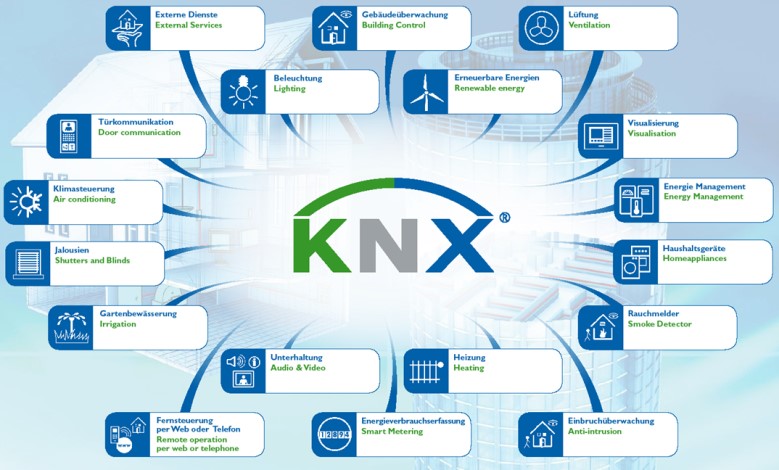(The author is Philip R. Juneau, CEO of Automated Technology Company (ATC) and vice president of KNX USA National Group. ATC's mission is to transform today's buildings into tomorrow's Net Zero (zero energy) infrastructures while providing the highest levels of safety, comfort and efficiency for occupants and the environment.)
In the introductory article of my "US Opportunities" column, I would first like to define my main goal, which is to promote the introduction of KNX in the United States. I will focus primarily on the simplicity and benefits of KNX, especially in view of its proven strength at system level and standard level. I will also present its use in commercial buildings as a complete, system-level application with a state-of-the-art interface to the whole building energy management system (BEMS), with a focus on IP convergence.
In this first article, I present the main benefits:
- Modern design and easy installation.
- Savings on installed materials and labour.
- Multiple market opportunities, proven and future-proof.
- Full system-level application for all disciplines

Modern design and easy installation.
The use of KNX is not limited by the size and scale of the building. It is as suitable for small residential buildings as it is for large commercial buildings. One KNX line can support up to 64 KNX devices using a single power supply, which form ranges. The ranges form a complete system. This means that up to 57 000 devices can operate in one system. If more is needed, IP couplers can be used to connect a virtually unlimited number of devices to a system. This simplified design allows for standardised and reusable designs, resulting in higher quality and lower risk projects, and easier troubleshooting and optimisation. For the installer, it also means easier installation. Once the design is complete, the KNX components can be pre-programmed, reducing the time the programmer has to be on site and shortening the commissioning time.
Savings on installed materials and labour.
The use of KNX at the system level results in cost savings, as LED lighting, shading (blinds), cooling and heating in rooms require less control wiring and energy than conventional analogue control. Savings can be made in installation labour by reducing the installation of wiring for all three trades, and in material usage, as only one combined room sensor/switch is required instead of three. If this were not sufficient, KNX certified cable allows installation in conventional cable ducts, conduits and modern prefabricated wiring systems. This means that the KNX cable can be installed together with the electrical wiring, thus avoiding the need for a separate low voltage cable duct (e.g. BACnet), saving considerable time and money. Multiple market options, proven and future-proof.
The main advantage of the KNX protocol is that it is a truly open system, with certified products from many manufacturers (more than 490) that seamlessly connect in the same network, without the need for special applications or drivers. With KNX-based systems, compatibility for upgrading and future expansion of existing bus networks is guaranteed, making them virtually future-proof. In addition, you can choose the best products for your application from a wide range of manufacturers. For example, you can prefer to use devices from one manufacturer for installation in a distribution board, while choosing switches and sensors from another. This gives customers flexibility in terms of both aesthetics and application.
Full system-level application for all disciplines
As a system-level application for lighting, shading, cooling, heating, security, etc., KNX provides a platform for all areas. It simplifies and rationalises design and construction for architects, engineers, contractors and building owners or operators. KNX offers a wide range of interfaces with other systems and protocols through built-in gateways available from a number of suppliers. These include OPC and BACnet networks, DALI and many more. These interfaces and gateways are commonly used all over the world and have a proven track record.
For a truly intelligent building, the collaboration offered by KNX is a huge advantage, bringing together control applications from different disciplines, allowing them to collaborate and share information about the same monitored and controlled space. We also have a KNX case study of a truly intelligent commercial building in the US, which we will present in a future article.
In summary
The many benefits and cost savings mentioned above make KNX the only logical choice for a collaborative, future-proof building control system that benefits everyone. With a global supply network, training centres and a multitude of manufacturers, it can be a low-risk, high-yield solution for new build or renovation projects.
